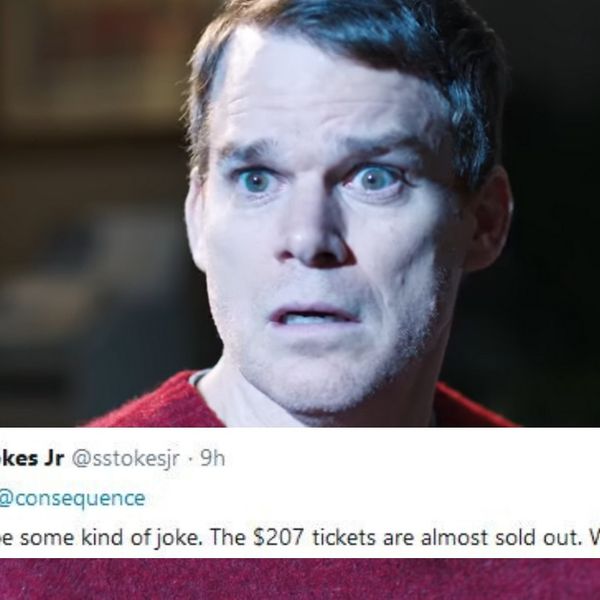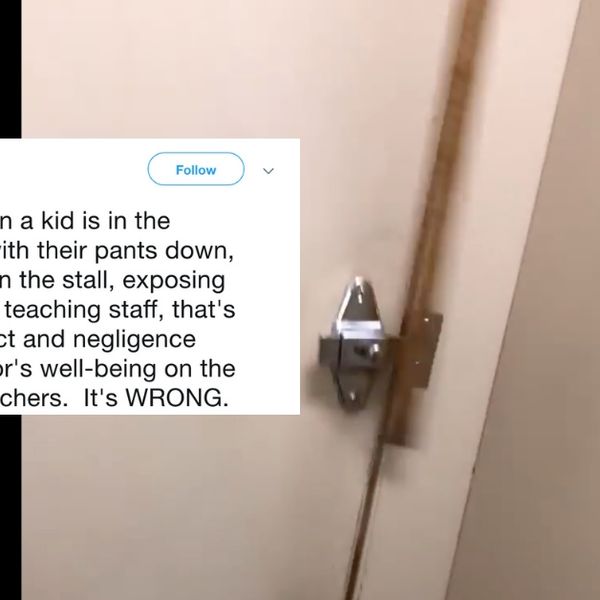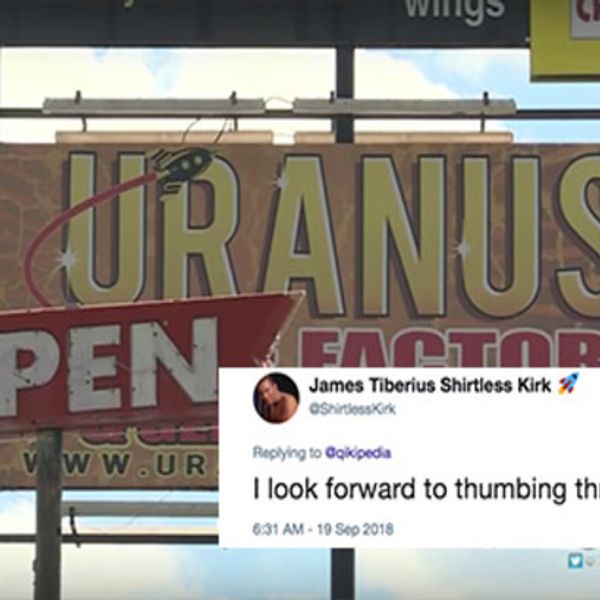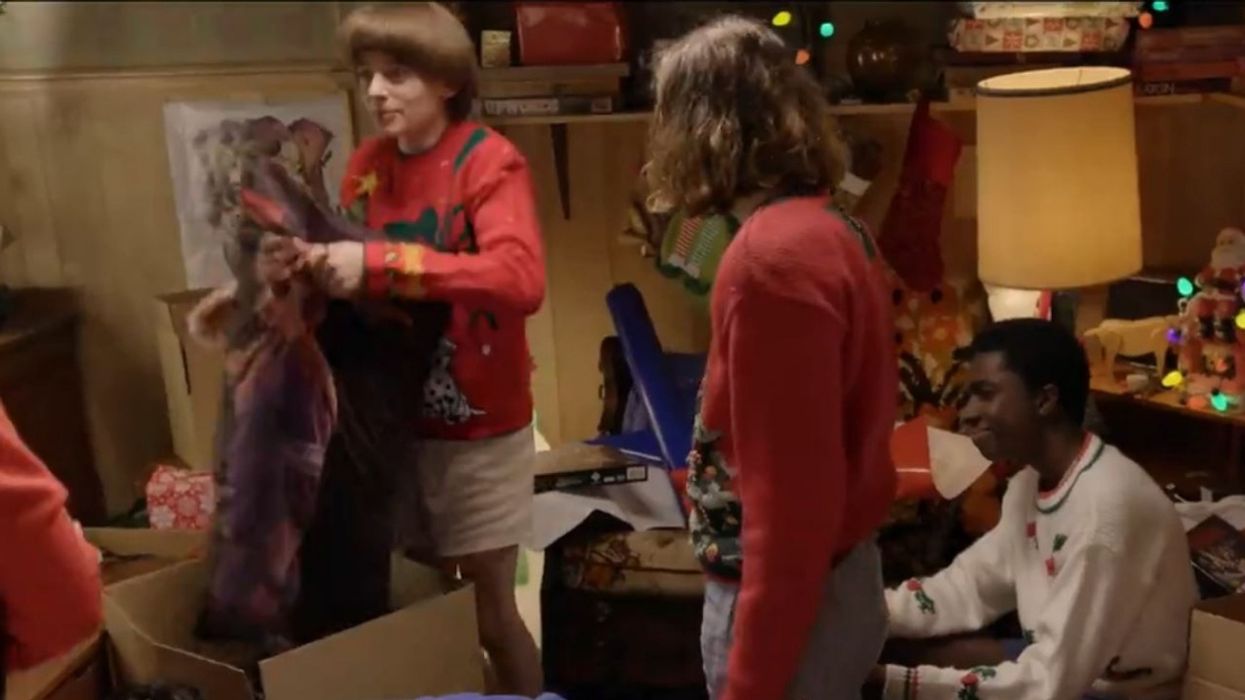January, 2002 I felt a rising sense of gravity as I was driven toward Manhattan. I'd just completed my engagement with Slanted Fedora Entertainment's Star Trek convention at the Meadowlands in New Jersey. The skyline of Manhattan was clearly visible in the crisp, mid-morning light. I saw the elegantly tapered silhouette of the Empire State Building once again dominant as the tallest structure on the horizon. The vacancy in that skyline was heartrending. It was almost as if I were being driven to visit the grieving family of a deceased friend - except that I, too, was a member of that family.
As we emerged from the Lincoln Tunnel into the relentless hurley-burley of 42nd Street, it was almost comforting to be engulfed by the familiar New York assault on the senses. Neon lights blazed in broad daylight. Traffic noise blared in competition with each other. And the unyielding mass of humanity still poured through the streets with determination. New York was resiliently, vibrantly alive.
 The next morning, I went on my pilgrimage to "Ground Zero," the place of the devastated remains of the World Trade Center. There was a long line to the viewing platform that had been built just east of the site. It snaked past the wrought iron fence surrounding the cemetery of old St Paul's Chapel dating back to 1780. The fence had become a grieving wall covered with photos, letters, Christmas wreaths, and other offerings posted in memory of the deceased and missing. They were bright, young people with ascendant careers. They were seniors ready to enjoy retirement. They were janitors and restaurant workers. They were people with names of every ethnicity in the world. When I read a letter addressed to "My little brother, our dearest son," my emotions wouldn't be contained. Tears ran cold down my cheeks. Snowflakes were falling softly. They reminded me of the ashes that fell from the sky that horrible September morning.
The next morning, I went on my pilgrimage to "Ground Zero," the place of the devastated remains of the World Trade Center. There was a long line to the viewing platform that had been built just east of the site. It snaked past the wrought iron fence surrounding the cemetery of old St Paul's Chapel dating back to 1780. The fence had become a grieving wall covered with photos, letters, Christmas wreaths, and other offerings posted in memory of the deceased and missing. They were bright, young people with ascendant careers. They were seniors ready to enjoy retirement. They were janitors and restaurant workers. They were people with names of every ethnicity in the world. When I read a letter addressed to "My little brother, our dearest son," my emotions wouldn't be contained. Tears ran cold down my cheeks. Snowflakes were falling softly. They reminded me of the ashes that fell from the sky that horrible September morning.
 When I reached the platform, I was stunned by the sheer enormity of the site. Sixteen acres of barrenness where once there had been structures teeming with the energy of global commerce and the two tallest office towers in the United States -- all only memories now. In their place was a vast emptiness. Only a great hole in the ground with a tangled mess remained. Tractors moved somberly among the rubble, clearing the wreckage. Only the day before, the remains of another person had been found. Surrounding this huge void were scarred, soot covered, vacant buildings, some covered with black netting like shrouds of mourning. That snowy January morning, I relived in my mind and bore witness to the horror and pain of the morning of September 11, 2001.
When I reached the platform, I was stunned by the sheer enormity of the site. Sixteen acres of barrenness where once there had been structures teeming with the energy of global commerce and the two tallest office towers in the United States -- all only memories now. In their place was a vast emptiness. Only a great hole in the ground with a tangled mess remained. Tractors moved somberly among the rubble, clearing the wreckage. Only the day before, the remains of another person had been found. Surrounding this huge void were scarred, soot covered, vacant buildings, some covered with black netting like shrouds of mourning. That snowy January morning, I relived in my mind and bore witness to the horror and pain of the morning of September 11, 2001.
I bore witness to the results of that dreadful day, but I know New Yorkers who actually lived through the terrors of the atrocity. Through friends with the Asian American Legal Defense and Education Fund, I arranged to have lunch with one of the heroes of September 11th, Officer David Lim of the Port Authority Police Department. A native New Yorker, he told his story in the punchy accent distinctive of Queens. Officer Lim is with the Canine Patrol in the World Trade Center. He was in the basement of the South Tower with his dog named Sirius inspecting the incoming cars when his walkie-talkie crackled that there was an explosion in the North Tower. His first thought was that someone had gotten a bomb past them up into the building.

He left his dog in the basement kennel and ran to the North Tower. On pure adrenaline, he rushed up 44 floors past fleeing people in roughly 20 minutes. There were office workers still sitting at their desks too stunned to react. Officer Lim went from floor to floor making sure everybody got out. He was in the stair well at around the 27th floor, when the whole building started to vibrate and rumble. It was the South Tower, which had been hit second but collapsed first, coming down. The North Tower was still upright. He urgently needed to get everyone out quickly. Officer Lim continued bellowing at the top of his voice, "Down is good. Down is good." When he reached the fifth floor, suddenly the entire building began to shudder with an indescribable sound combining an approaching train with an avalanche. He heard the snapping of pipes and cracking of concrete together with the deafening roar as they began to fall. He remembered thinking, "If I'm gonna die, please God, make it fast." Then there was silence. Miraculously, he and two other officers found themselves together and alive, trapped in a pocket. They were imprisoned in that cranny for about five hours before they were able to claw their way out. He ended his story by telling us, "My dog died in the collapse of the South Tower. I know exactly where Sirius is. They still haven't gotten to him yet."
I had dinner with Stan Honda, a photojournalist friend, who took photographs of the attack on the World Trade Center that have now become iconic. His picture of an African American woman completely covered in ash, looking shell-shocked and almost ghost-like, staggering away from the wreckage was published in virtually every newspaper and magazine in the world. Fortune Magazine used his photo of the ash-coated businessman, still in full suit and tie, still carrying his briefcase, on its cover. As I reminisced with Stan about my trips to New York in the early 70's, noting on each flight the progress of the steel skeletons of the World Trade Center as it worked its way 110 stories up into the sky, he shared with me his panic working frenetically as the great structures came roaring down.
A photo exhibit titled "Faces of Ground Zero" opened at Grand Central Station while I was in New York. I made a date to get together with my actress friend, Pat Suzuki, for lunch and a viewing of the exhibit. The display was made up of bigger than life-size photos of the heroes of the tragedy taken with a giant camera the size of a small room. The oversized images of people that we would ordinarily call "common guys" -- firefighters, police officers, medical workers, spouses of those that didn't survive, and others -- were profoundly moving. They were "common guys" caught in an extraordinarily uncommon situation who rose to the full challenge of the occasion with uncommon valor. They were the faces of the muscles and energy of working New York. They were the faces of the diversity of New York -- Hispanic, white, black, Asian and, yes, Middle Eastern. They were indeed, the faces of American resolve and American unity. Those faces and the quotes accompanying them were, at once, deeply touching and so uplifting. Over lunch, Pat revealed to me that for a couple of months, she had gotten up at 4 a.m. in the morning to volunteer as a breakfast cook for the rescue workers at ground zero. It seems all New Yorkers were involved in one way or another. They are all kindred.
After New York, I flew to Park City, Utah, for the Sundance Film Festival. I had worked on a small, independent film titled, "Noon Blue Apples" last year and it was to be premiered as part of the festival. I had been to the Venice Film Festival in Italy twice but this was my first visit to Sundance. What a contrast! It was as dramatic a difference as snow and water, as distinct as skis and gondolas.
However, there are also similarities. Both are storybook cities. Both places look like movie sets - one a floating Italian Renaissance capital turned popular tourist destination, the other an old western mining town turned ski resort. The energy, excitement, tensions, and partying are exactly the same. The overwhelming choices of film screenings are dizzyingly alike. Deal making seemed to be going on everywhere at Sundance, in restaurants, bars and even street corners. "Noon Blue Apples" is a psychological thriller by independent filmmaker Jay Lee with a fine performance by young actress, Lauren Fox. A member of the cast, actor Montel Williams, has a chalet in Park City and threw a lavish party for the cast, crew, press, and distributors. Jay and his producer sister, Angela Lee, were energetically wooing potential distributors.
During my four days at Sundance, I gorged myself on movies - from midnight screenings to early morning shows. But, like gorging on food, constant movie going can cause cinematic indigestion. I ingested some discomforting movies. Among them, however, were gems that I enjoyed greatly. "Love in the Time of Money" and "The Laramie Project" were impressive films with wonderful performances. But the very last movie I saw at Sundance before I left for the airport was the best. It was a 9 a.m. screening of an independent film starring Robin Williams titled "One Hour Photo." It was the highlight of my Sundance movie-going experience. First time feature director Mark Romanek had given Robin Williams his most challenging opportunity to stretch his creative muscles. And he rose fully to the challenge with a brilliant characterization of a sad and chilling loner. I predict that both Mark Romanek and Robin Williams will be Academy Award contenders next year.
People Are Roasting Trump Over His Mind-Numbing Observation About The Wetness Of Water 😂
Donald Trump thanked the first responders who came to the aid of victims of Hurricane Florence. The storm devastated portions of North Carolina, dumping massive amounts of rain and damaging millions of dollars in property. Many natural areas were destroyed, some farmers lost everything and more than a few people have been left homeless. The first responders after this massive storm were literal life savers, and Trump was absolutely right to thank them. Unfortunately, the sentiment of his message was lost for many people because he didn't seem to put any effort or preparation into what he was saying. Then, in the middle of his off-the-cuff message, he confused everyone by talking about the wetness of water.
As Trump described the storm and the importance of first responders he told the world:
This is a tough hurricane, one of the wettest we've ever seen from the standpoint of water. Rarely have we had an experience like it and it certainly is not good.
The Tweet went out in the middle of the day on Tuesday, September 18th. At the time of this article, it hasn't even been up for 24 hours and already has over 13,000 comments. Many of them pointed out how Trump didn't even seem to try...
and how asinine his description was.
We don't know if Trump will continue to address the public by releasing these kinds of videos, or if they will continue to be as unrehearsed as this one is. We assure you, if they are, Twitter will have plenty to say about it.
H/T: Huffington Post, Twitter
The Kids From 'Stranger Things' Wrapped Presents For Superfans—And Did A Delightfully Terrible Job 😂
When it comes to giving gifts, not all celebrities are as crafty as Taylor Swift, but that didn't stop the adorable stars of Netflix's Stranger Things from giving it a try.
In a recently released video from Netflix, actors Millie, Finn, Noah, Caleb, Gaten, and Sadie got together for some holiday cheer and to wrap gifts for fans. But kids will be kids, even if they star in a hit television show. Watch as chaos ensues.
Fans loved every moment, even if the kids weren't the greatest wrappers.
@Stranger_Things I love seeing them mess around with each other.— Abby! (@Abby!) 1545318707.0
@doublejoywilson https://t.co/qgFgkZpTxQ— Stranger Things (@Stranger Things) 1545318849.0
@realrevella https://t.co/G5Er8pydg5— Stranger Things (@Stranger Things) 1545318801.0
@themallratss we do what we can https://t.co/POBMVbXfZS— Stranger Things (@Stranger Things) 1545319099.0
@Stranger_Things They’re a cute mess 😂— Janet ⁷✜🪐 (@Janet ⁷✜🪐) 1545318854.0
@minseokjin94 https://t.co/Dr4Y4xFYyM— Stranger Things (@Stranger Things) 1545318939.0
@Stranger_Things Thanks for the gif...they’re a MESS mess https://t.co/cG5ODdPDf0— Janet ⁷✜🪐 (@Janet ⁷✜🪐) 1545319571.0
@pvladins AH THE SOUND OF HOLIDAY CHEER— Stranger Things (@Stranger Things) 1545318737.0
@Stranger_Things HAPPY HOLYDAYS TO THE DEMOGORGON https://t.co/BpB1ZixUK5— 𝑣𝑎𝑙 ⚯͛ (@𝑣𝑎𝑙 ⚯͛) 1545318680.0
@edwardistheman @netflix ok here https://t.co/UwOLIa1T1C— Stranger Things (@Stranger Things) 1545318880.0
We just can't get enough of these talented kids!
Macaulay Culkin Is Having Fans Vote On What He Should Legally Change His Name To—And The Options Are Bizarre 😮
Have you ever wanted to help your favorite celebrity reach their potential by giving them a new name? Fans of Macaulay Culkin will be able to do just that, as he's allowing them to vote and pick his new middle name.
The choices are beyond strange.
Thanks for having me @jimmyfallon @FallonTonight !!! I'll let you know how the name change works out! https://t.co/iIkTC8OyXH— Macaulay Culkin (@Macaulay Culkin) 1543452222.0
In a segment on The Tonight Show with Jimmy Fallon, Culkin announced his desire to change his middle name to something else. He allowed people to submit names for the last month, and narrowed those down to the top five.
Some of the suggestions were interesting, to say the least.
@DevonESawa Weird. I'm about to change my middle name. Any good suggestion? Go to https://t.co/BYXGIWJK3g— Macaulay Culkin (@Macaulay Culkin) 1540529059.0
@IncredibleCulk @FallonTonight @jimmyfallon It should be "Culkin, Macaulay" as a middle name. Will be read as: Mac… https://t.co/xRo5AiR8jd— carmineenimrac (@carmineenimrac) 1543469371.0
@IncredibleCulk @jimmyfallon @FallonTonight How did you miss "Macaulay Skulking Culkin"?!— Caleb DAVIS (@Caleb DAVIS) 1543487990.0
@ComicBook @IncredibleCulk Pls add Cacaulay Mulkin as an option— Matt Michler 🌹 (@Matt Michler 🌹) 1543603411.0
@ComicBook @IncredibleCulk Kevin! Obviously.— Andrew 🐼 🐝 (@Andrew 🐼 🐝) 1543603516.0
The official choices: Shark Week, The McRib Is Back, Kieran (submitted by his famous younger brother), Macaulay Culkin, and Publicity Stunt. That last one was suggested by Culkin's girlfriend, actress Brenda Song, and gives away the game.
Fans are still excited to vote for his new name.
@IncredibleCulk @jimmyfallon @FallonTonight Macaulay “Shark Week” Culkin has a nice ring to it.🐰 Vote on… https://t.co/AS5ce275jl— Shark Week (@Shark Week) 1543526453.0
The moment of joy that hopefully comes to us all during the day just transpired for me and funny enough, it took le… https://t.co/stOVPePmpy— Sia Brooks (@Sia Brooks) 1543606608.0
Macaulay Culkin Needs A New Middle Name https://t.co/HO9ZMUM1O1 via @bunnyearsweb @IncredibleCulk I voted for "Kier… https://t.co/jnVAa6NTlp— Stetson (@Stetson) 1543815411.0
I voted for @IncredibleCulk new middle name, what did you do today?— Catalina F 🇨🇱 (@Catalina F 🇨🇱) 1543801274.0
@IncredibleCulk @jimmyfallon @FallonTonight I like Keiran— Melissa (@Melissa) 1543517677.0
McAuley Culkin is allowing fans to vote on what is legal middle name should be, two of the final 5 is “Macauley Cul… https://t.co/KUPTU0HnKR— YOUAREDEAD (@YOUAREDEAD) 1543620499.0
@IncredibleCulk @jimmyfallon @FallonTonight Just for you to know, I voted Macaulay Culkin!— 🍀 Maria (@🍀 Maria) 1543495868.0
This is all a publicity stunt to drive traffic to Culkin's website, Bunny Ears, launched earlier this year in March. The site bills itself as a lifestyle and holistic health brand, similar to Gwyneth Paltrow's Goop. However, the articles are jokes or satirical.
Good luck finding the site if you tried to go there right after the Fallon segment.
@IncredibleCulk @jimmyfallon Look at the bunny ears website now after @jimmyfallon voted on @IncredibleCulk middle… https://t.co/PFAwxsRB8E— Charles John Kelly (@Charles John Kelly) 1543485190.0
With articles like "A Tour Guide Of The Places Where Men Have Dumped Me" in their 'Travel Guides' section, or "Meditative Things White People Can Do While Black People Attempt To Explain White Privilege" under 'Spiritual Wellness,' it's difficult to imagine the site is wanting for traffic.
Time will tell what Culkin's new middle name will be, but as of this writing, it's looking like he'll be known as Macaulay Macaulay Culkin Culkin. Which is a shame, because Macaulay Shark Week Culkin had such a nice ring to it.
H/T: Huffington Post, Bunny Ears
Time-Lapse Video Shows What A Rocket Launch Looks Like From Outer Space—And It's Dazzling 😮
We've all seen videos of rockets launching from the ground, but what does the event look like from space?
European Astronaut Alexander Gerst, on board the International Space Station, managed to capture time-lapse footage of the Russian Progress MS-10 cargo spacecraft flying through Earth's atmosphere on its way to delivering supplies to ISS.
Very few people will ever have the chance to see an event like this in person.
Russian Rocket Launch Seen by Space Station - Amazing Time-Lapse Videoyoutu.be
Gerst created the video by setting up a camera to take regular photos through the wrap-around Cupola window of the station, which resulted in a video roughly 16 times faster than real life. Watching the rocket launch in person took 16 minutes but, in Gerst's video, the launch, stage one re-entry, and escape from the atmosphere all occur within one minute.
@_TheSeaning @Space_Station That's awesome!— Scott Waby (@Scott Waby) 1542898886.0
The rocket in the video, known as Progress 71, was on its way to delivering 5,652 pounds of supplies to ISS. The next flight, pushed back to December 3 after a sensor malfunction resulted in the cancellation of an October 11 liftoff, will bring replacement personnel for NASA astronaut Serena Auñón-Chancellor and Russian cosmonaut Sergey Prokopyev. Both have been in orbit since June).
If all goes according to plan, the Canadian astronaut David Saint-Jacques will take off from the steppes of Kazakhs… https://t.co/o0LpNWTsJQ— CTV Vancouver (@CTV Vancouver) 1543800600.0
People online were amazed by the footage from space.
@_TheSeaning @Space_Station Seán, thank you for this. THIS is easily one of THE most mesmerising, and exquisitely s… https://t.co/a440XaOEX6— Nathanial_LB - نثنيال (@Nathanial_LB - نثنيال) 1542915054.0
@_TheSeaning @jasonrdavis @Space_Station SO COOOOL— Justin Foley (@Justin Foley) 1542908365.0
@_TheSeaning @Space_Station wow. just...wow. this is incredible— Sarafina Nance (@Sarafina Nance) 1542918245.0
I hardly think I need to hyperbolize this at all, because it’s simply so freaking cool: Time-lapse video of a rocke… https://t.co/lx32324AWv— Phil Plait (@Phil Plait) 1542989889.0
@BadAstronomer I watched this 5 times with my jaw on the floor... And then made everyone around the Thanksgiving ta… https://t.co/iMbSm8nvIO— Marc Leatham (@Marc Leatham) 1542990342.0
@BadAstronomer @LongDogSecurity https://t.co/Yv3YZQI9Oe— MO News DAilY (@MO News DAilY) 1543001454.0
@BadAstronomer I think that’s the most beautiful photo of Earth I’ve ever seen— Ben Migliore (@Ben Migliore) 1543092741.0
@freak1ngawesome Reverse of shooting star— Shivani Jadeja (@Shivani Jadeja) 1543667552.0
@AntonioParis What an inspiring way to begin my day! Thank you! 💫🚀✌🏻— Heather Call-Me-Elf-One-More-Time Hartley (@Heather Call-Me-Elf-One-More-Time Hartley) 1543492212.0
Videos like these are a nice reminder that space truly is the final frontier! If ISS is looking for a soundtrack to put behind their video, we have an idea:
Star Trek: The Next Generation Intro HDyoutu.be

















